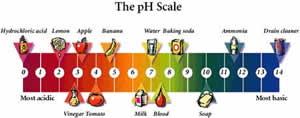Summary
Charity Fair is the most complex project of the year because it stretches out to every class. Students had to complete tasks and learn new skills in each class, that relates to their product or charity. In social studies, students researched and learned information about the organization they support. Including the charity's mission, story, and how many they have affected on their journey. In math class, students learned the profit they would make by selling their product, the price of their product, and how much it would cost to produce their product. In addition, students learned the charity statistics, such as how much money the charity makes per year and what percentage goes to the cause. In science, students learned the mode of transportation to ship each material that contributes to the creation of the product. In engineering, students learned how to create an instructable and backboard for the project. Lastly in language arts, students learned how to put together an ignite presentation to efficiently advertise their charity in exactly 2 minutes.
Backward-Looking
During this year's annual Charity Fair, students were put into groups of 2 to 3 among the peers in their class. The priority of Charity Fair is to find a charity or organization that you truly care about and sell products to raise money for that charity. To find the ideal charity, each group had to research the different organizations that supports their topic in social studies. Based on observing the charity's ratings and mission, students were able to make a decision about what charity best suites their outlook. This leads to the final choice of the certain charity the group is willing to support/advertise throughout this project. Next, groups had to decide what product they are going to sell in order to raise money for charity. This product has to have some correlation to the group's charity. Once the product is approved, students had to create a Cost & Profit and Statistics document in math class. In addition, students created a google map in science alongside a Carbon Footprint document. Meanwhile in engineering, students had to make an online instructable that would be pasted on a backboard that is also created in that class. To finish it of, students created a quick ignite presentation containing only photos, to influence students/teachers to vote for their charity.
Inward-Looking
Going into this project, I had many standards for myself as well as my group. Since I am currently in 8th grade and this is my last year of Charity Fair, I knew exactly what to expect. So I had many expectations and goals to hopefully accomplish. The first expectation was for my group to choose a charity that we really care for. The main reason for Charity Fair is to raise money for a worthy cause. It is very important that the charity you are advertising speaks volumes to you and that you are passionate about the topic. Another expectation was for my group to get work done efficiently and on time. After years of doing the same type of work for this project, we should know how the assignments are expected to be completed and what to do for them. In addition, we should know the amount of work that needs to be done for Charity Fair, therefore we should be able to split the work up equally so that it is turned in on time. The last expectation I had was for each group member to memorize their lines for the ignite presentation. At our age, we should be setting a good example to the younger students presenting. It is unprofessional to be reading from a script.
Outward-Looking
The one thing I would like people to notice or take away from my group's project is how hard we have worked on it. It has taken so much time and effort to complete each assignment for Charity Fair. There were several different tasks that needed to be done at the same time and for different classes. The amount of work for this project was overwhelming and took dedication to complete. In addition, to create the products we sold at Charity Fair, my group had to stay extra hours at each other's houses to make each item perfect. My group sold gingerbread house kits so it definitely took a while to create each component of the kit. The gingerbread was very difficult to bake because the shapes had to be cut neatly and the dough needed to be at the right thickness or else the cookies would break too easily. It took several tries to get the outcome that we wanted. The same trial and error situation happened with the icing as it needed to be the right ratio of ingredients in order to create a consistency that was strong enough to hold the house, yet would pipe with ease.
Forward-Looking
Looking at the final outcome of this year's Charity Fair, I would only like to change one thing if I had the change to do this project over again. This one change would be to create more of my group's product. In the past, it always took a good amount of time to sell all of my group's product. However this year it only took the first five minutes for my group to sell out. Once all of the products were gone, there was nothing to sell and no more money could be raised from my group's stand. This quick sell out is due to the mistake of making only ten products. Although each item was very difficult to create because of the complexity of each component put into the product, I still believe that we could have at least made a few more products. Therefore making fifteen in total. This would give others who were looking forward to our product, a chance to buy one. It would also allow my group to raise more money for the chosen charity and contribute to its donations.











